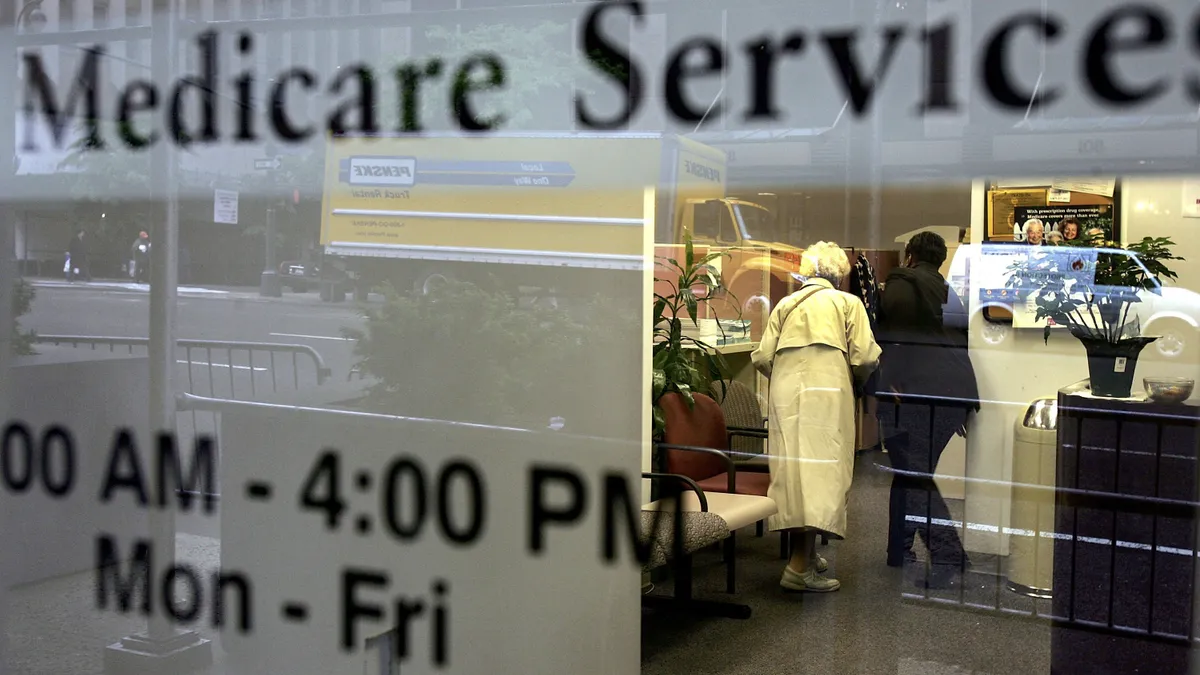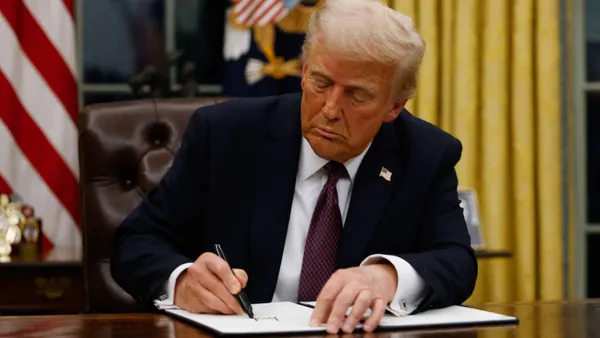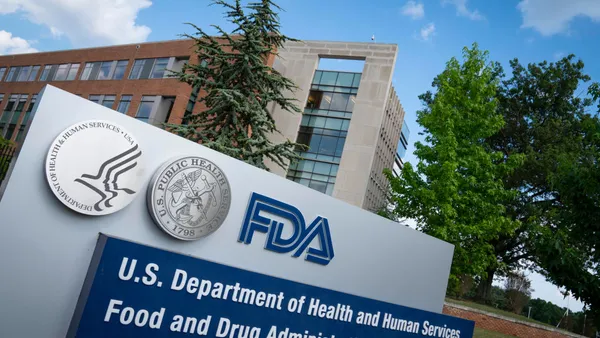Dive Brief:
- While the coronavirus pandemic has significantly affected short-term spending in Medicare, it shouldn't have a large impact on the financial status of the program's trust funds after 2024, according to the Medicare Board of Trustees' annual report to Congress.
- The new forecast released Tuesday is somewhat of a bright spot for the otherwise grim financial prospects of the program, as some experts predicted COVID-19 would result in the Hospital Insurance Trust Fund, which finances Medicare Part A, running out of money faster than earlier expected. However, the trustees, who include HHS Secretary Xavier Becerra and CMS Administrator Chiquita Brooks-LaSure, still expect the fund to run dry by 2026 — the same estimate as 2018, 2019 and 2020's reports due to policy inaction from Washington.
- Spending in Medicare is expected to balloon from 4% of the country's gross domestic product to 6.2% by 2045, after which costs are expected to rise more slowly before leveling off at around 6.5% of the GDP, according to the report.
Dive Insight:
Though the pandemic has injected volatility into most aspects of healthcare spending since early 2020, the long-term financial status of the trust funds backing Medicare funding hasn't really changed from past estimates, according to the new report.
The forecast is noteworthy given another more drastic outlook from the Congressional Budget Office issued last September estimated the pandemic had shaved two years off the expected lifespan of the hospital insurance trust fund, with insolvency expected in 2024 instead of 2026.
Now, the trustees are predicting that's not the case.
Medicare, which covers 63 million seniors and disabled Americans, was dramatically affected by COVID-19 last year as the amount of payroll taxes expected to flow into the trust fund were reduced due to the pandemic's economic effects, and testing and treatment costs for the virus rose. Additionally, several pieces of legislation and policy changes also increased spending, including payments for COVID-19-related inpatient admissions being hiked by 20% and an expansion of telehealth funding.
However, a drastic decline in non-COVID-19 related health services generally offset those additional costs, the trustees said, though spending still rose. Total Medicare expenditures were $926 billion in 2020, compared to $796 billion in 2019.
The trustees based their projections on actual data through 2019, while adjusting to account for the spending impacts of the pandemic through 2023. The policymakers estimate non-COVID-19 spending will be lower than previously expected in the beginning of 2021 due to the large wave of new cases, but as deferred care returns in the back half of the year, spending will be higher than previously anticipated.
That higher spend is likely to continue through 2022, the report says, though there's significant uncertainty factored into that projection.
"It should be noted that there is an unusually large degree of uncertainty with these COVID-related impacts and that future projections could change significantly," the trustees wrote.
The report also factors in the costs of COVID-19 vaccines, but interestingly does not include the potential effects of Medicare coverage of Aduhelm, Biogen's controversial (and pricey) Alzheimer’s disease drug recently approved by the Food and Drug Administration. CMS has yet to issue a coverage determination for Aduhelm.
The outlook from the trustees does estimate demographic shifts like an aging population increasing stress on Medicare and ongoing growth in federal healthcare costs per beneficiary.
In 2020, the hospital fund's expenditures exceeded income by $60.4 billion, mostly due to advance Medicare loans to providers during the public health emergency that have to be paid back. Those repayments in 2021 and 2022 should result in a small deficit in 2021 and a surplus in 2022.
But after that, the trustees project deficits in all future years until the trust fund runs dry.
The fund hasn't met the trustees' test for short-range financial adequacy since 2003. Growth in its spending has averaged 7.6% annually over the past five years, compared with non-interest income growth of 5.2%.
To date, lawmakers have not allowed the Medicare trust fund to become depleted, though watchdogs and deficit hawks warn the situation is getting increasingly precarious. Congress has largely kicked the can on the issue, following bipartisan efforts to lower spending in the early 2010s that proved fruitless.
But Medicare's substantial financial shortfall needs to be addressed with further legislation, sooner rather than later, to ensure its future, experts say.
The U.S. has "lost yet another year from inaction," Maya MacGuineas, president of the Committee for a Responsible Federal Budget, said in a statement.
Under current law, if the trust fund runs out, Medicare payments would be reduced to levels that would be able to be covered by incoming tax and premium revenues. That could threaten coverage for tens of millions of Americans, the trustees said.
"If the health sector cannot transition to more efficient models of care delivery and if the provider reimbursement rates paid by commercial insurers continue to be based on the same negotiated process used to date, then the availability, particularly with respect to physician services, and quality of health care received by Medicare beneficiaries would, under current law, fall over time compared to that received by those with private health insurance," the report says.
Despite such warnings, part of the $3.5 trillion budget plan approved by the House last week would expand Medicare to include dental, vision and hearing coverage. If passed by the full Congress, the additional benefits would close a major coverage gap, but also additionally stress Medicare's finances without a corresponding bump in funding, policy experts say.
This year's report triggered a Medicare funding warning, which requires the president to propose legislation fixing the issue to Congress along with the 2023 budget.
This is the fourth consecutive year that a Medicare funding warning has been issued.
Meanwhile, the Supplemental Medical Insurance trust fund that finances Part B, which mainly covers physician services and medical supplies, and Part D, the prescription drug benefit, remains stable, trustees said. That's because income from premiums and general revenue for Parts B and D are reset every year, to cover expected costs and ensure a reserve for Part B contingencies.












